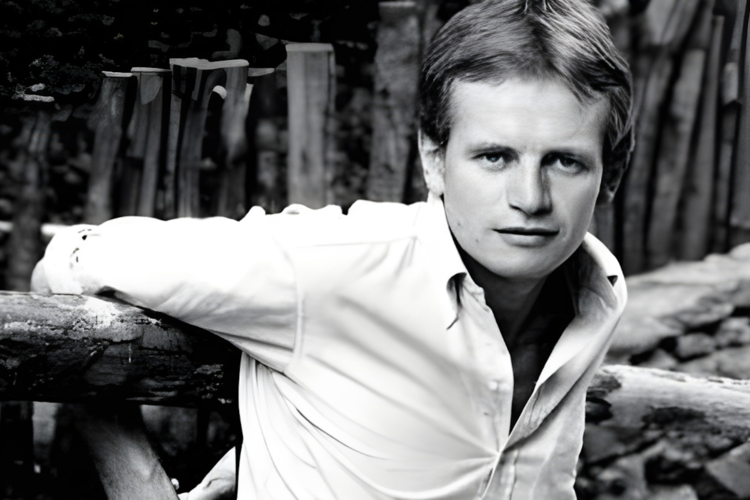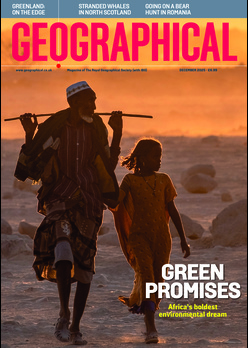
Bruce Chatwin revitalised travel writing in the 1970s with his restless curiosity and literary flair
By
Bruce Chatwin packed an astonishing expanse of activities into a short life – from his time as head of art auction house Sotheby’s Impressionist Department to his adventures in the footsteps of his hero Robert Byron across Afghanistan and subsequently his travel across the globe and production of half a dozen books of essays, personal profiles and travel stories.
The Afghan experience, it might be noted, led him to the conclusion that it was the ‘hippies’ – and not any insurgent group or the Taliban of the future – who were doing their utmost to destroy the country by driving educated Afghans into the hands of Marxist revolutionaries.
Writer and theatre critic Susannah Clapp described Chatwin as ‘a traveller, a teller of tales and a connoisseur of the extraordinary’, a celebrity who ranked as ‘one of those few writers who are acclaimed before they are dead’.
Enjoying this article? Check out our related reads:
It’s said that looks aren’t everything, but there can be little doubt that had Chatwin been a less striking figure, he might not have been so avidly fêted as a world traveller and raconteur. Six feet in height, blond and slim with penetrating blue eyes, this product of a conventional middle-class British background struck a commanding presence.
Chatwin gave up his job at Sotheby’s at the age of 26. In his book The Songlines, which describes the music of Australia’s Aboriginal people and their nomadic traditions, he explains the catalyst for his sudden departure from the world of full-time work.
Chatwin says that he woke up unable to see one morning, though a sluggish and clouded vision returned during the course of the day.
The eye surgeon who examined him, Patrick Trevor-Roper – younger brother of historian Hugh Trevor-Roper – found nothing clinically amiss, apart from a latent squint, and suggested that instead of looking at pictures, he should take a six-month break to seek longer horizons. Trevor-Roper, a pioneer gay rights campaigner, was a kindred spirit.
Chatwin himself was bisexual, a circumstance his wife was aware of and accepted throughout their sometimes tumultuous 23-year relationship. Elizabeth Chanler, an American, was an unwavering presence in Chatwin’s life, on their travels and until his final illness.
She co-edited Under the Sun: The Letters of Bruce Chatwin alongside his biographer, Nicholas Shakespeare. The collection includes correspondence spanning Chatwin’s life, offering insights into his personal and professional world.
Chatwin wrote to his friend, the entrepreneur Michael Cannon: ‘You may have heard that I have left Sotheby’s to read a degree in archaeology at Edinburgh. Change is the only thing worth living for. Never sit your life out at a desk. Ulcers and heart condition follow.’

Chatwin hastily decided on a trip to the Sudan, where he met the nomads who were to influence his travels. He also found a puff adder curled up under his sleeping bag one night and learned to read footprints in the sand.
As it turned out, Edinburgh was, predictably, a halfway house, where he spent two years before eventually realising, as he put it, that archaeology is as much dominated by things as any auction house. This was to be a temporary gap between his office job and the life awaiting him as a world traveller, explorer and narrator.
As he once remarked to the New York Times art critic John Russell: ‘I’m happy with temporary situations. Sometimes they fall in on me and I have to find a new one in a hurry, but generally they work very well.’ Russell described Chatwin as looking – and quite often dressing – like a questing, insubordinate English schoolboy, with a prodigious gift of mimicry and the ability to be at home in all places and at every level of society.
The abiding success of his stint at Sotheby’s was to have worked alongside Elizabeth Chanler, a secretary at the auction house whom Chatwin was to wed and, as might be expected, spend a honeymoon on a sea voyage around the coast of Maine.
On their return to the UK, Chatwin found himself keen to write a book about nomads, a subject of lifelong personal fascination, hoping to shed light on the question of restlessness in the human spirit.
He believed humans to be fundamentally nomadic by nature, not to be encumbered by possessions. Chatwin was a potent collector and weaver of myths – a man obsessed with bizarre and brilliant stories.
Chatwin’s intention was not to write a history of nomads. He wasn’t prepared to invest the years of research required for such an undertaking. Instead, he wanted his book to be general, rather than specialist, in tone.
The question he sought to answer was, in its simplest form, why people wander rather than sit still. This was to become one of – if not the single most important – theme in his life. It verged on obsession – a way of making sense of his contact with archaeology and geographical investigations.
In the end, Chatwin’s first published work, released in 1977, was not about his pursuit of nomadism.
In Patagonia was the debut work that catapulted him to stardom – a status confirmed by his subsequent publications: The Viceroy of Ouidah and On the Black Hill. It’s a travelogue that springs from one of the author’s childhood experiences, which took him to Punta Arenas, near the southern tip of Chile, just north of Tierra del Fuego, where he spent six months. This was the place where his globetrotting forbear, Charley Milward, had died.
The book is a literary quest that arose from the narrator’s discovery of a piece of animal skin with coarse, reddish hair in his grandmother’s curio cabinet. It had been sent to her by Milward. This spurred Chatwin on the path to research the origin of what he believed to have been the skin of a brontosaurus. The book was enthusiastically received by critics, who hailed it as a work that revitalised travel writing.
Chatwin’s journeys through the southern cone of South America served as the root source for In Patagonia – the book that made his name as one of the most renowned travel writers of the 20th century.

His research in Australia for The Songlines brought him into contact with the German filmmaker Werner Herzog, who was inspired by the young writer’s exploits. He later produced the documentary Nomad: In the Footsteps of Bruce Chatwin, an account of the writer’s life that explores his fascination with nomadism and ancient cultures.
Chatwin gained worldwide fame with his two most celebrated travel books – In Patagonia and The Songlines – the latter largely inspired by his meetings with the Argentinian novelist Jorge Luis Borges.
He was also esteemed for his newspaper and magazine travel articles. Nomadism was the subject most dear to his heart – and sadly, the manuscript he wrote on the subject never saw the light of day as a published work. This was The Nomadic Alternative, which today is held in the archives of Oxford’s Bodleian Library.
He had wanted to write, in his own words, ‘a big radical book’, which in the end he acknowledged was a failure because it was ‘unprintable’. However, the manuscript serves as a useful source for understanding the ideas and themes that influenced Chatwin’s fascination with the subject.

As he once said on a BBC programme, he believed that even the ostensibly mellow classes of Middle England had this in their blood and that ‘if you scratch their skin underneath you’ll find they’re burning wanderers’.
Chatwin died of an AIDS-related illness in 1989 at the age of 48, after enduring more than five years of failing health.
The British author Andrew Harvey paid homage to him with these words: ‘Nearly every writer of my generation in England has wanted, at some point, to be Bruce Chatwin,’ and ‘wanted to be talked about, as he is, with raucous envy. They wanted, above all, to have written his books.’
Fellow author Salman Rushdie, a close friend of Chatwin for many years, said Chatwin possessed ‘the most erudite and possibly the most brilliant mind I ever came across’.
Rushdie believed Chatwin had only just begun what would have been a brilliant career. ‘We only saw the first act,’ he said. ‘He was creating himself into a person he’d be happy to be. Out of all the people he had experimented being, he quite liked being the writer Bruce Chatwin.’




